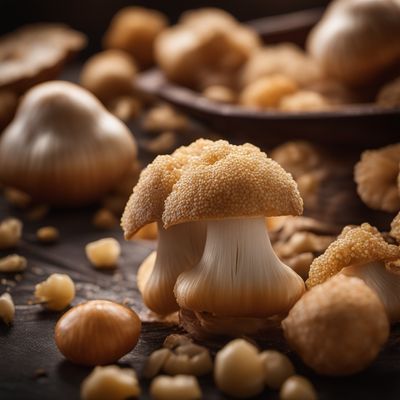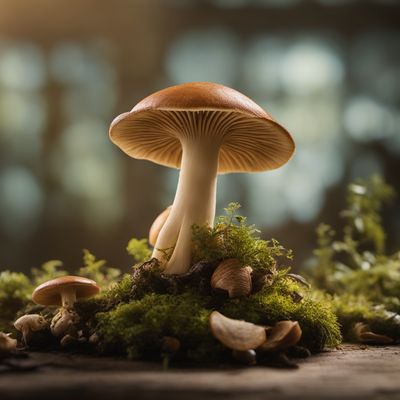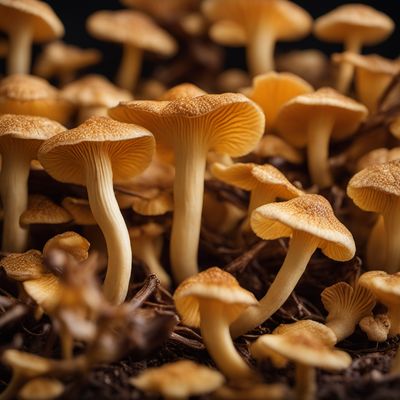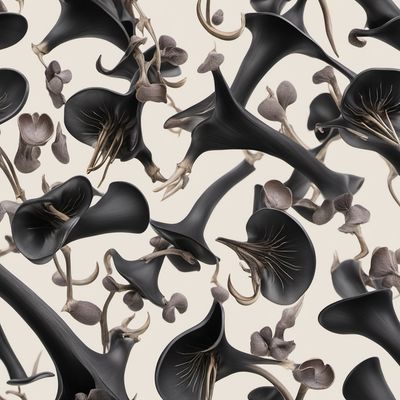
Ingredient
Ceps
The King of Mushrooms
Ceps, also known as porcini mushrooms, are large, fleshy mushrooms with a distinctive cap and thick stem. They have a rich, earthy flavor that intensifies when cooked, and a meaty texture that adds depth to dishes. The caps are brown in color with a slightly wrinkled appearance, while the stems are thick and sturdy. Ceps are highly sought after for their unique taste and are considered a delicacy in many cuisines.
Origins and history
Ceps have a long history of culinary use and are particularly prominent in Italian and French cuisine. They have been enjoyed for centuries and were highly valued by ancient civilizations such as the Romans. Ceps are native to Europe, particularly the Mediterranean region, and can be found growing in forests, often near pine or oak trees. They have become a symbol of autumn and are harvested during this season. In addition to their culinary significance, ceps also hold cultural importance in certain regions, where they are celebrated in festivals and traditional dishes.
Nutritional information
Ceps are a good source of protein, fiber, and various minerals such as potassium, phosphorus, and selenium. They are low in calories and fat, making them a nutritious addition to meals. Additionally, ceps contain antioxidants that help protect against cell damage and boost immune function.
Allergens
Ceps may cause allergic reactions in some individuals, particularly those with mushroom allergies. It is important to exercise caution and consult with a healthcare professional if you have any known allergies or sensitivities.
How to select
When selecting ceps, look for mushrooms that are firm and plump, with a fresh, earthy aroma. Avoid mushrooms that are slimy, discolored, or have a strong, unpleasant odor. The caps should be intact and free from any signs of damage or decay. If possible, choose ceps that have been harvested recently, as they tend to have better flavor and texture.
Storage recommendations
To maintain the freshness and quality of ceps, store them in a paper bag or a breathable container in the refrigerator. Avoid storing them in plastic bags, as this can cause moisture buildup and accelerate spoilage. Ceps are best consumed within a few days of purchase, but they can also be dried or preserved for longer shelf life.
How to produce
Ceps can be challenging to cultivate due to their symbiotic relationship with certain tree species. However, if you have access to suitable trees such as pines or oaks, you can attempt to grow ceps by inoculating the tree roots with porcini spores. This process requires specific knowledge and expertise, so it is recommended to consult with a mycologist or experienced cultivator for guidance.
Preparation tips
Ceps can be prepared in various ways, depending on the desired dish. They can be sautéed with garlic and herbs for a simple side dish, added to risottos or pasta dishes for a rich and earthy flavor, or used in soups and stews to enhance the depth of the broth. Ceps can also be dried and ground into a powder to be used as a seasoning or added to sauces for an intense umami kick.
Culinary uses
Ceps are widely used in Italian and French cuisine. They are a key ingredient in dishes such as risotto ai funghi, boeuf bourguignon, and pasta with porcini mushrooms. Ceps can also be found in various international cuisines, including Russian, Polish, and Slovenian dishes. Their rich flavor and meaty texture make them a versatile ingredient in both vegetarian and meat-based recipes.
Availability
Ceps are commonly available in Europe, particularly in countries such as Italy, France, and Slovenia. They can also be found in North America, particularly in the Pacific Northwest region of the United States and Canada. Additionally, ceps are cultivated in some parts of Asia, including China and Japan.
More ingredients from this category

Truffles
The Earth's Edible Gems

Saffron milk cap
The Golden Delicacy: Unveiling the Secrets of Saffron Milk Cap

Gypsy mushroom
The Enigmatic Delicacy: Gypsy Mushroom

Other wild fungi
Exploring the Hidden World of Wild Mushrooms

Scotch bonnet mushrooms
Fiery Delights: Unleashing the Flavors of Scotch Bonnet Mushrooms

Saint George's mushrooms
The Forest Delicacy

Chanterelles
Golden Delicacy

Honey mushroom
The Golden Fungus

Hedgehog mushrooms
Exquisite Earthiness: Hedgehog Mushrooms

Morels
The Earthy Delicacy

Horns of plenty
Exploring the Delights of Horns of Plenty